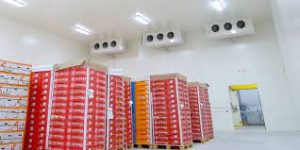The Future of Cold Storage: Innovations and Trends to Watch

Cold storage is a crucial element of many industries, including food and beverage, pharmaceuticals, and biotech. The need for reliable and efficient cold storage solutions is more important than ever, and as technology continues to advance, so do the innovations and trends shaping the future of this industry.
Innovations in Cold Storage
The following are some of the most exciting innovations in cold storage:
Robotics and Automation
Robots and automation are becoming increasingly common in cold storage facilities. They can perform tasks such as loading and unloading products, transporting them around the warehouse, and even conducting inventory checks. This reduces the need for human labor, which can be expensive and increase the risk of human error.
Cloud-Based Management Systems
Cloud-based management systems allow cold storage facility managers to monitor and control their operations from anywhere. This technology can help to optimize energy usage, reduce waste, and ensure that products are stored at the correct temperatures.
IoT Sensors
IoT sensors can monitor conditions in cold storage facilities in real-time. This includes temperature, humidity, and even air quality. These sensors can alert facility managers to potential issues before they become significant problems, reducing waste and ensuring product quality.

Trends in Cold Storage
The following are some of the trends shaping the future of cold storage:
Sustainability
Sustainability is a major concern for many industries, including cold storage. The use of renewable energy sources, such as solar or wind power, is becoming more common. Additionally, facilities are implementing sustainable practices such as recycling and reducing waste.
Increased Regulation
The need for strict regulation in the cold storage industry is becoming increasingly important. This includes regulations around product safety, temperature control, and the use of chemicals. Facilities that fail to meet these regulations risk fines, loss of business, and damage to their reputation.
Efficiency
The need for efficiency in cold storage facilities is driving the adoption of new technology and innovative practices. This includes the use of automation, robotics, and cloud-based management systems. These solutions can help to reduce costs, increase productivity, and improve overall efficiency.
Conclusion
The future of cold storage is exciting, with numerous innovations and trends shaping the industry. From the use of robotics and automation to the adoption of cloud-based management systems, these technologies can help to optimize operations, reduce costs, and improve overall efficiency.
As the importance of sustainability and product safety continues to grow, cold storage facilities will need to keep up with increased regulations and adopt more sustainable practices. By staying on top of these trends, cold storage facilities can position themselves for success in the future.

Recent Comments